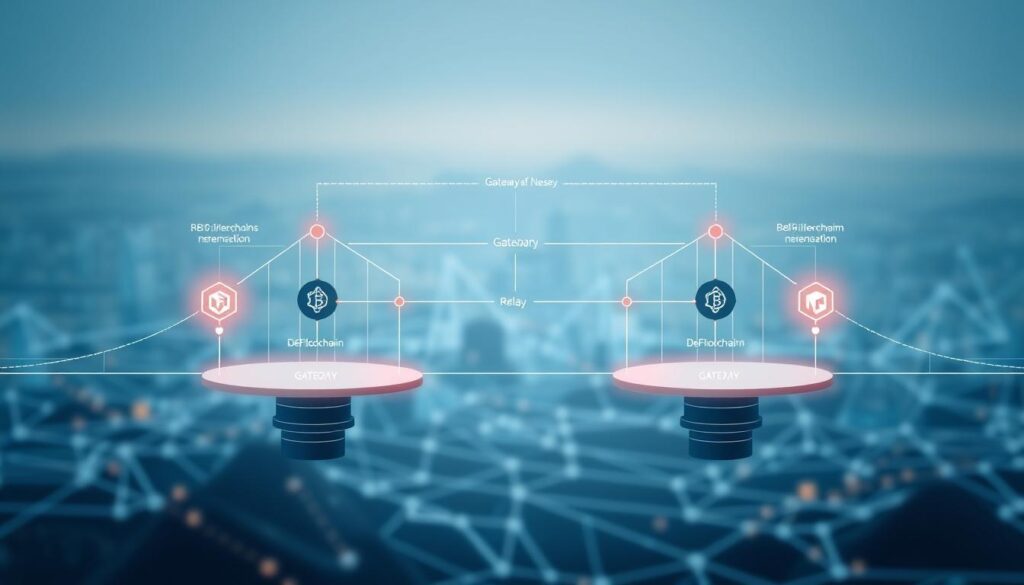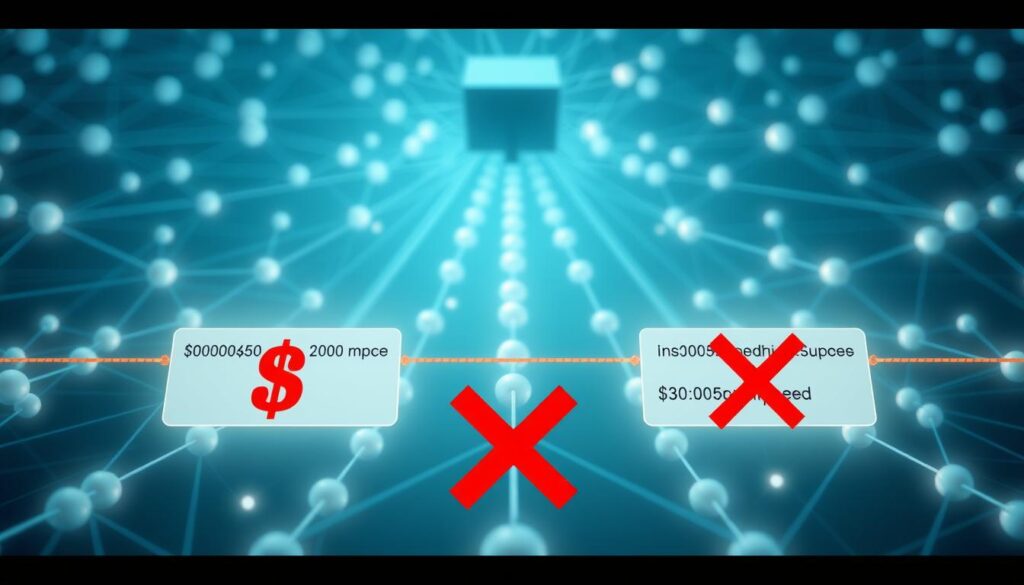Now Reading: Blockchain Fork Types: Understanding Hard Fork and Soft Fork
- 01
Blockchain Fork Types: Understanding Hard Fork and Soft Fork
Blockchain Fork Types: Understanding Hard Fork and Soft Fork

In the world of decentralized networks, change is a constant. Sometimes, the computers in a network cannot agree on a single path forward. This disagreement leads to a split in the digital ledger’s history. This event is known as a fork.
These splits are powerful tools for growth and improvement. They allow a network to upgrade its rules, fix problems, or add new features. Understanding the different kinds of splits is crucial for anyone involved in this technology.
This article will explore the two main categories of these events. We will look at how they work and why they matter. These moments can reshape a network’s future, influencing everything from security to community trust.
By the end of this guide, you will grasp the strategic importance of these events. You will see they are more than just technical changes. They are pivotal decisions with long-lasting effects on a network’s health and direction.
Key Takeaways
- A fork happens when participants in a decentralized network disagree on protocol rules.
- Forks are essential mechanisms for implementing upgrades and resolving disputes.
- There are two primary categories of forks, each with different levels of compatibility.
- These events can significantly impact a network’s governance and the value of its assets.
- Understanding fork types is vital for developers, investors, and users to navigate risks and opportunities.
- Forks represent structural changes that test community consensus and network integrity.
Introduction to Blockchain Forks
Public digital ledgers operate on a principle of distributed consensus, where no single entity holds control. This structure requires all participants to agree on the state of the shared record. When everyone agrees, the system maintains a single, trustworthy chain of events.
Understanding the Concept and Importance
These distributed systems rely on individual computers, known as nodes, to validate information. Each node follows a set of rules called the protocol. This process ensures that all new blocks of data are legitimate before they are added to the chain.
However, disagreements can arise about how these rules should evolve. This is where the concept of a split becomes crucial. It is a mechanism that allows a network to upgrade, resolve conflicts, or pursue new directions when consensus fractures.
Overview of Decentralized Networks and Consensus
Major cryptocurrencies like Bitcoin and Ethereum are open-source projects. This means their code is public, and anyone can propose improvements. The community of developers and users collaborates to enhance security and functionality.
This open environment naturally leads to different ideas about the future. A fork represents a pivotal moment where the community must choose a path forward. It tests the network’s unity and shapes its long-term health.
blockchain fork types hard fork soft fork: Key Differences
The core distinction between upgrade methods lies in their compatibility with the network’s existing software. This compatibility determines whether the system remains unified or splits into separate paths.

Defining Hard Forks and Soft Forks
A hard fork creates a permanent divergence from the previous version of the software. Nodes that do not upgrade to the new rules are left behind on the old chain.
This results in two separate networks operating independently. In contrast, a soft fork is a backward-compatible upgrade.
Older nodes can still recognize new blocks as valid, maintaining a single chain. The key differences are clear:
- Hard Forks: Non-backward-compatible. Requires all nodes to upgrade. Can create a new, separate asset.
- Soft Forks: Backward-compatible. Does not force nodes to upgrade. Maintains a single network.
Real-World Examples from Bitcoin and Ethereum
A famous example of a hard fork is the creation of Bitcoin Cash (BCH). The community disagreed on how to increase transaction capacity.
This led to a split from the original Bitcoin (BTC) network. Each chain now follows its own set of rules, with distinct communities and assets.
Such events demonstrate how fundamental disagreements can reshape an entire ecosystem.
How Hard Forks Transform Blockchain Networks
The transformation of digital ledgers often happens through dramatic events that create entirely new pathways forward. These significant upgrades represent turning points where networks evolve in fundamentally different directions.
Mechanics of a Hard Fork
When protocol rules change in ways that break compatibility, nodes must choose between versions. The updated software creates blocks that older systems cannot validate. This forces a permanent split in the network’s history.
Participants running the new version follow different rules than those staying with the original software. The system divides into two separate chains moving forward independently.
Implications on Network Governance and Asset Duplication
These events test community cohesion and decision-making structures. When major disagreements occur, the network fragments into competing chains. Each path attracts different supporters and resources.
Asset duplication becomes a significant outcome. Holders of the original currency receive equivalent amounts on the new chain. This occurred with Bitcoin Cash splitting from Bitcoin.
| Aspect | Original Chain | New Chain |
|---|---|---|
| Protocol Rules | Remains unchanged | Implements new changes |
| Community Support | May lose some participants | Attracts upgrade supporters |
| Asset Value | Can be affected by split | Starts with duplicated assets |
| Development Focus | Continues existing roadmap | Pursues new direction |
These transformations demonstrate how decentralized systems manage fundamental changes. The outcomes shape the long-term viability of both pathways.
Exploring Soft Fork Benefits and Implementation
Some of the most successful network improvements happen gradually through backward-compatible updates. These changes allow systems to evolve without forcing all participants to upgrade simultaneously.

This approach maintains network unity while introducing important enhancements. The method involves tightening existing protocol rules rather than creating incompatible ones.
Backward-Compatibility and Incremental Changes
When developers add new rules that older software can still understand, the system remains cohesive. Nodes running outdated versions continue to validate blocks created under updated protocols.
This backward-compatibility feature prevents chain splits and asset duplication. It enables networks to implement security improvements and functionality upgrades incrementally.
The process requires careful coordination but avoids the disruption of permanent divisions. Participants can adopt changes at their own pace while maintaining network connectivity.
Case Studies: SegWit Upgrade and Its Impact
Bitcoin’s 2017 Segregated Witness upgrade demonstrated this approach effectively. It modified how transaction data was stored without changing fundamental block size limits.
The implementation separated signature information to increase effective capacity. This reduced transaction fees while maintaining compatibility with existing address types.
SegWit’s success enabled Layer 2 solutions like the Lightning Network. The upgrade showed how substantial improvements can occur without network fragmentation.
This case study highlights the strategic value of compatible protocol evolution. It preserves community cohesion while addressing critical scalability challenges.
Security Implications and Advanced Mitigation Strategies
Major protocol changes in decentralized systems introduce unique security challenges that require careful management. These events create temporary instability that malicious actors can exploit.

Understanding these vulnerabilities helps participants protect their assets during network transitions. Proper planning reduces risks significantly.
Risks: Double-Spending, 51% Attacks, and Replay Attacks
Three primary threats emerge during network splits. Double-spending occurs when attackers spend the same assets on both chains.
The 2018 Bitcoin Gold incident demonstrated this risk, causing millions in losses. Attackers exploited the temporary confusion between competing chains.
Reduced mining power on each chain creates 51% attack vulnerability. Ethereum Classic experienced this multiple times after its separation.
Replay attacks happen when transactions work on both networks simultaneously. This can cause unintended asset transfers.
Mitigation Techniques and Pre-Fork Planning
Advanced preparation prevents most security issues. Teams should implement replay protection with unique chain identifiers.
Diversifying mining pools maintains network strength. Comprehensive security audits identify vulnerabilities before implementation.
Proper security planning includes testnet deployments and stress testing. This reveals potential problems in a safe environment.
Post-Fork Monitoring and User Education
Continuous monitoring detects anomalies quickly after the event. Real-time analytics and bug bounty programs help identify issues.
User education remains critical for overall security. Informed participants make better decisions about asset management.
Clear communication about fork implications helps users navigate the transition safely. Knowledgeable users significantly reduce ecosystem vulnerability.
| Attack Type | Primary Risk | Prevention Method |
|---|---|---|
| Double-Spending | Asset loss on both chains | Strong consensus mechanisms |
| 51% Attack | Transaction history manipulation | Hash rate distribution |
| Replay Attack | Unauthorized transactions | Unique chain signatures |
These strategies create a comprehensive security framework for network upgrades. They protect both the system and its participants during critical transitions.
Future Trends and Institutional Perspectives
The evolution of distributed ledger technology continues to shape how networks manage upgrades and community disagreements. New approaches are emerging that could transform how these systems implement changes.

These developments focus on creating smoother transitions and more inclusive decision-making processes. They represent the next phase of maturity for decentralized systems.
Emerging Governance Models and Interoperability Solutions
Innovative governance structures are gaining traction to prevent contentious splits. Decentralized autonomous organizations (DAOs) allow token holders to vote directly on proposed changes.
On-chain voting mechanisms provide transparent community input on protocol updates. This structured approach reduces the likelihood of dramatic network divisions.
Technical advancements also offer alternatives to traditional upgrade methods:
- Interoperability protocols enable different networks to share data without disruptive splits
- Multi-chain architectures create flexible environments for new features
- Advanced consensus mechanisms like sharding enable scalability without fundamental protocol changes
Strategic Considerations for Institutional Investors
Financial institutions approach network upgrades with different priorities than individual users. They evaluate the stability of governance structures and developer activity levels.
Investment teams assess how potential splits might affect asset performance and liquidity. They consider the long-term viability of both original and new chains.
Understanding these dynamics helps institutions build resilient portfolios. Knowledgeable investors can navigate upgrade events while managing risks effectively.
Conclusion
Navigating the landscape of decentralized systems requires understanding pivotal moments of change. Both hard fork and soft fork mechanisms serve as essential tools for network evolution, each with distinct implications for community consensus and technical implementation.
The critical differences between these upgrade methods impact how protocol changes unfold across distributed systems. While one approach creates separate chain pathways, the other maintains backward compatibility within a single network.
Security considerations remain paramount during these transitions. Proper planning and testing help mitigate risks while preserving system integrity. This knowledge empowers developers, investors, and users to make informed decisions.
As technology advances, the focus shifts toward building resilient governance models that minimize disruptive events. Understanding these fundamental mechanisms ensures stakeholders can navigate future changes with confidence and strategic insight.
FAQ
What is the main difference between a hard fork and a soft fork?
A hard fork creates a permanent split from the original network, resulting in a new, separate chain. All nodes must upgrade to the new protocol. A soft fork is a backward-compatible upgrade. Nodes that don’t upgrade can still follow the new rules, making it a less disruptive change.
Can you give a real-world example of a hard fork?
A prominent example is the creation of Bitcoin Cash from Bitcoin in 2017. The split occurred due to a disagreement within the community over increasing the block size to allow more transactions. This event resulted in two distinct digital assets and networks.
What is a key benefit of implementing a soft fork?
The primary advantage is backward compatibility. Since the new rules are stricter, older software versions can still validate transactions and blocks. This allows for a smoother, more gradual adoption of new features across the network without forcing a chain split.
What security risks are associated with a hard fork?
Hard forks can introduce risks like replay attacks, where a transaction on one chain is maliciously rebroadcast on the other. There’s also a temporary decrease in hashing power as miners choose a chain, potentially making a network more vulnerable to a 51% attack immediately after the split.
How does the Segregated Witness (SegWit) upgrade relate to a soft fork?
The SegWit implementation on the Bitcoin network is a classic case of a soft fork. It introduced a new transaction format to solve scalability issues while remaining compatible with nodes that did not upgrade. This allowed the network to improve without a disruptive split.
What should users do to prepare for a potential fork?
Users should stay informed through official channels from the project’s developers. It’s often recommended to move assets to a personal wallet where you control the private keys before a major upgrade. After the event, ensure you are using compatible software and understand how to access any new assets safely.















